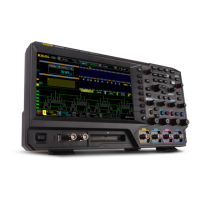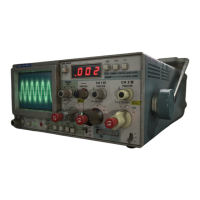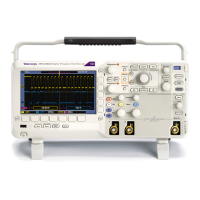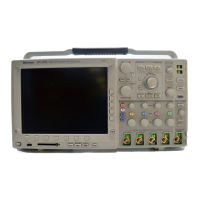Oscilloscope Reference Scallop loss
Scallop loss
Scallop loss is the difference between the actual magnitude and the computed magnitude of a signal that is
halfway between two frequency bins in the s pectral output data. Scallop loss is only noticeable when the
spectral ana
lyzer is not using zero-fill such as when it is set to full span.
If zero-fill is in use, frequency domain interpolation occurs and there is minimal scallop loss. Zero-fill
cannot be di
rectly controlled; it is affected by changing settings of resolution bandwidth or gate width.
When in use, a minimum of 20% of the FFT input is always zero, effectively removing scallop loss
error by interpolating in the frequency domain.
NOTE. For most settings, descriptions of amplitude accuracy due to scallop loss (as discussed in other
publications) do not apply to this oscilloscope when used as a spectral analyzer because of zero-fill. Full
span is the most likely setting w here scallop loss might occur.
Scan controls
These controls are available for the C ustom video format. Interlaced and Progressive are the only available
Scan Types.
The Scan Rate enables you to trigger on nonbroadcast video s i gnals that ha ve unique scan rates. Select the
scan rate range that includes your signal: 15-20 kHz, 20-25 kHz, 25-35 kHz, 35-50 kHz, or 50-65 kHz.
Selecting a spectral w indow
A spectral window determines what the filter shape of the spectral analyzer will be in the frequency
domain. It may be described by a mathematical function that is multiplied point-by-point times the input
data to the spectral analyzer.
The following spectral windows are available with the instrument:
Rectangular
Hamming
906 DSA/DPO70000D, MSO/DPO/DSA70000C, DPO7000C, and MSO/DPO5000 Series

